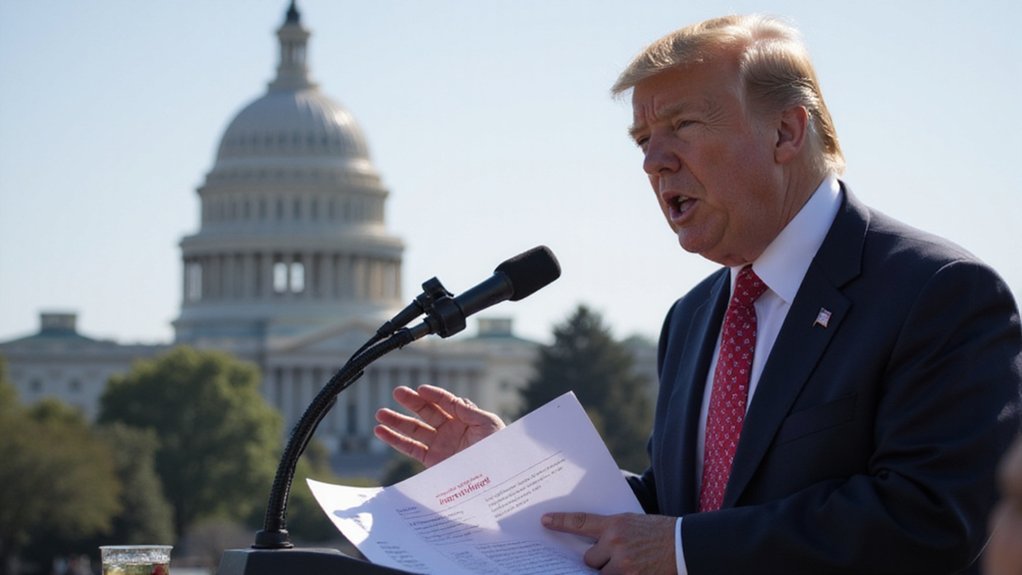Trumpeting a major breakthrough for digital asset regulation, the Trump administration’s cryptocurrency leader has signaled that the long-awaited stablecoin bill is poised for imminent approval, following a decisive 66-32 Senate vote that advanced the legislation past its procedural hurdles.
A landmark victory for crypto regulation as the Trump-backed stablecoin bill clears Senate hurdles with surprising bipartisan support.
The bill, spearheaded by Senator Bill Hagerty (R-Tenn.), garnered support from 16 Democrats who joined the Republican majority—a remarkable display of bipartisanship in an otherwise polarized legislative landscape.
This weekend witnessed feverish negotiations resulting in a revised draft that assuaged Democratic concerns over regulatory language.
The compromise represents a remarkable pivot from previous opposition, with Republicans conceding certain provisions to secure the necessary votes for passage.
The White House crypto czar has underscored stablecoin regulation as a priority, acknowledging its potential to unleash trillions in value for the U.S. Treasury.
The proposed framework—the first of its kind in the United States—establishes parameters for dollar-pegged digital tokens, mandating that issuers maintain accessible reserves equivalent to their tokens in circulation.
Such requirements aim to mitigate systemic risk while bolstering consumer protection in a market previously characterized by regulatory ambiguity.
Following the Memorial Day recess, the Senate is expected to pass the final version, after which it will advance to the GOP-controlled House for reconciliation with its separate stablecoin measure.
Both the GENIUS Act and the STABLE Act have advanced through their respective committees with bipartisan support, signaling Congress’s commitment to creating a comprehensive regulatory framework for digital assets.
The timeline remains fluid, though momentum suggests the bill’s eventual arrival on the President’s desk is a foregone conclusion.
For the crypto industry, which has lobbied relentlessly for regulatory clarity, this development represents a watershed moment.
The legitimization of digital assets through a coherent regulatory framework will likely catalyze institutional investment while positioning the United States as a leader in digital currency innovation.
This regulatory shift aligns with broader industry expectations that market volatility will decrease as cryptocurrency moves from speculative investment to practical utility.
The stablecoin legislation emerges as part of broader technological and financial policy shifts, with implications extending beyond immediate market participants to the fundamental architecture of future digital payment infrastructure.
As one wag noted, Washington has finally recognized that the digital genie cannot be returned to its analog bottle.









